Excerpts from Jim Conrad's
Naturalist Newsletter
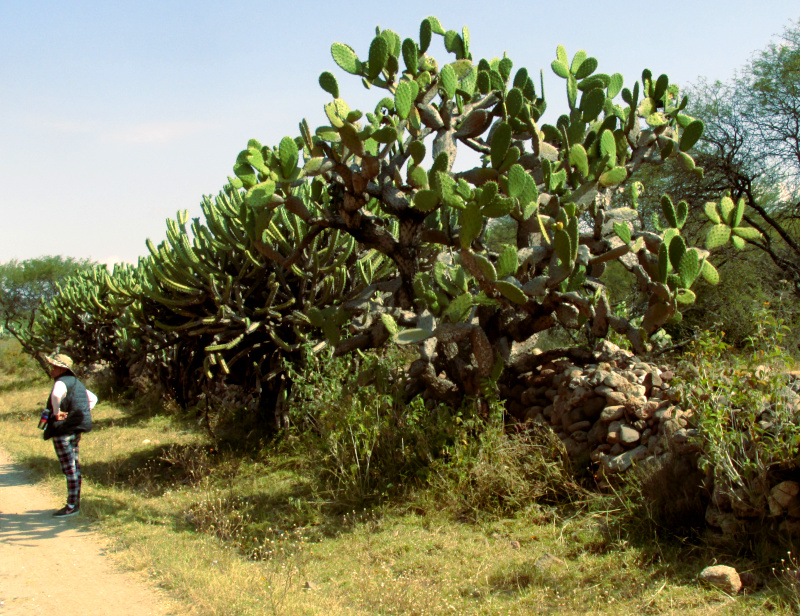
Most plants at this time of year show no indications of flowering or fruiting, though a few retain a few woodpecker-pecked fruits, shown below:
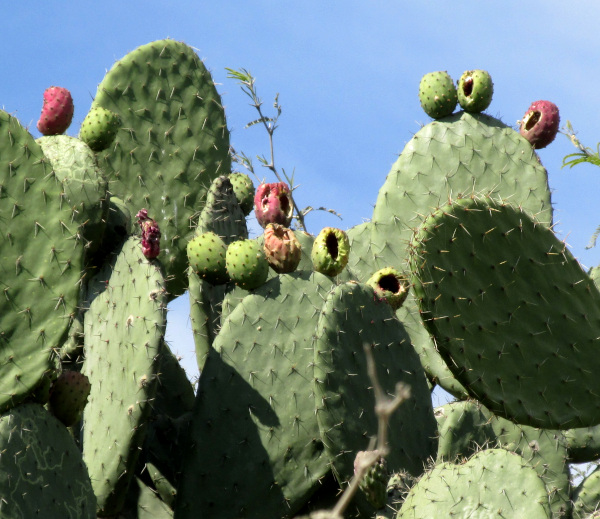
Spines number one or two in each cluster and are whitish. Glochids stick straight up.

Here's a close-up of some glochids:
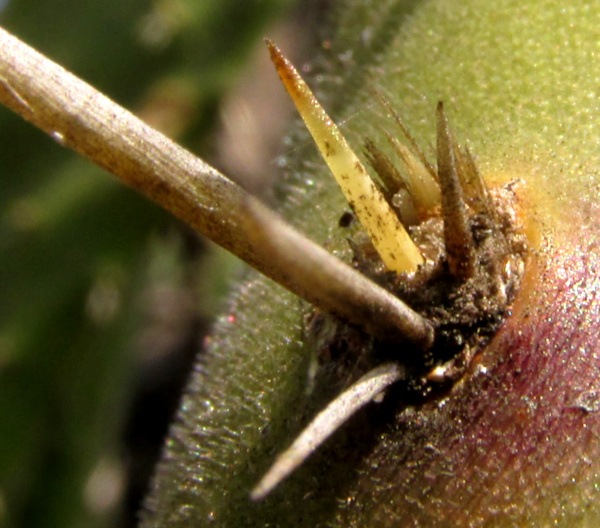
This species is beging pegged as the Velvet Pricklypear, OPUNTIA TOMENTOSA
entry dated April 30, 2022, issued from near Tequisquiapan, elevation about 1,900m (6200 ft), ~N20.57°, ~ W99.89°, Querétaro state, MÉXICO
VELVET PRICKLYPEAR FLOWERING
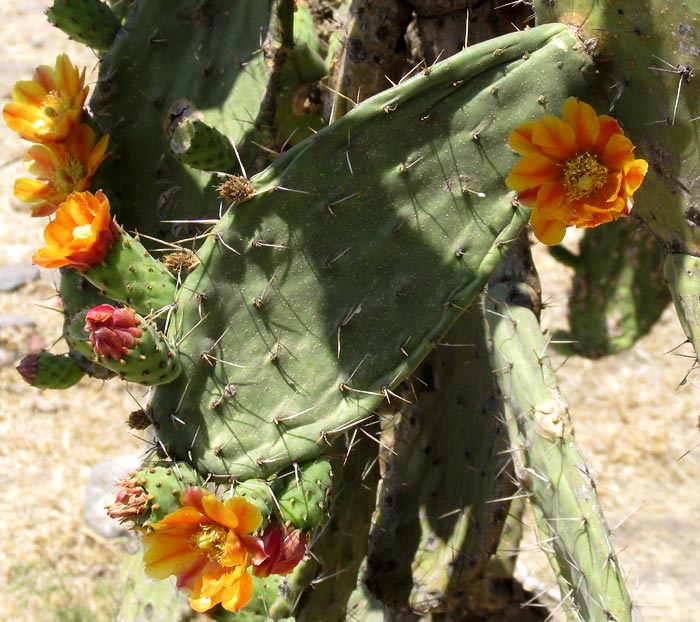
The Velvet Pricklypears have begun flowering. Sometimes it's easy to confuse this species with the more common Opuntia engelmannii variety cuija. However, when the Velvet Pricklypears' more slender pads began flowering, shown above, their blossoms were two-toned orangish-yellow, not all bright yellow like those of Opuntia engelmannii variety cuija. Also, that species has been flowering since March, but the Velvet Pricklypear's flowers waited until late April.
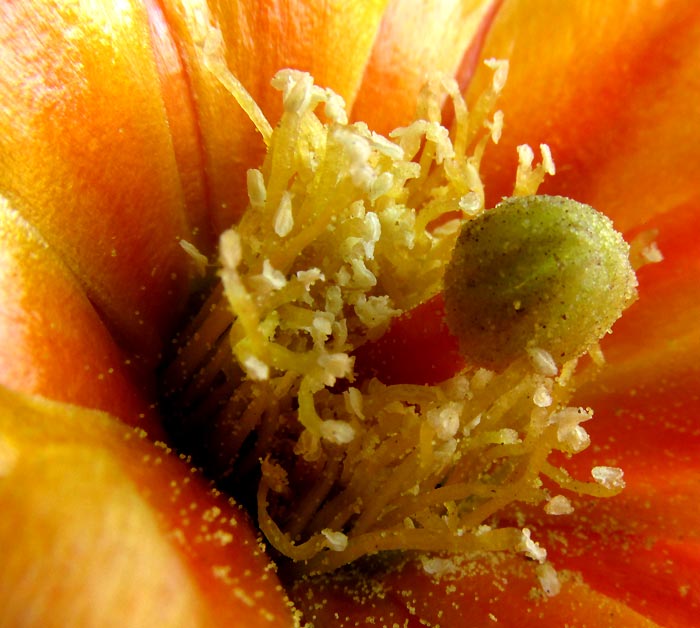
Above, a flower's interior is shown. Much pollen has been dislodged from the anthers, and it's true that bees were very active among the blossoms as I photographed. Charles Darwin noted that pricklypear flowers have "thigmotactic anthers" -- anthers that move when touched. This is a fascinating adaptation that appears to deal with the problem that many bee species visit the flowers, but only a small number of "oligolectic" bee species actually pollinate the flowers. Oligolectic species are those adapted to pollinate just a single family or genus of plants. You may enjoy studying the details of how this works in a 1997 publication by Clemens Schlindwein and Dieter Wittmann, "Stamen movements in flowers of Opuntia (Cactaceae) favour oligolectic pollinators." In the above photo, our flower's stamens have already been visited, and already moved toward the stigma.
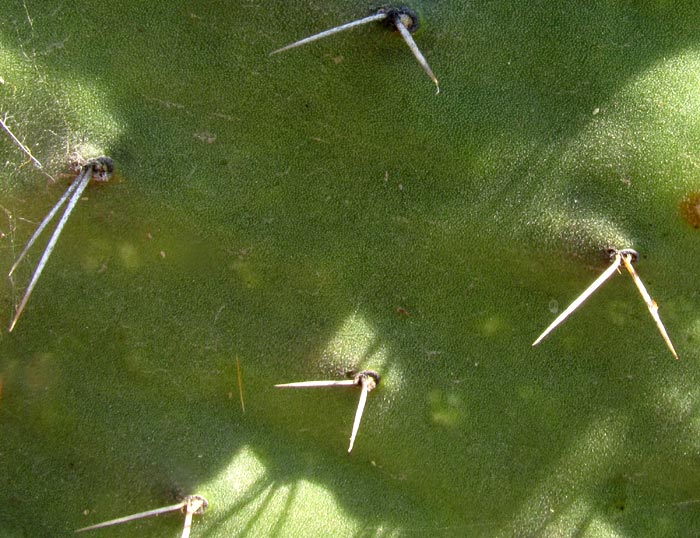
These narrow-padded pricklypears also bore smaller spines than Opuntia engelmannii variety cuija, usually produced only two or three per group, and were whitish except on young pads. In cacti, spines arise form special small, often somewhat oval, well defined areas known as "areoles." Spines arise only from areoles. In the pricklypear group of cacti, some of the areoles' spines are tiny, barbed, deciduous ones called "glochids." Inside the areole, exposed surface area between spine bases is carpeted with dense, woolly hairs. Below, you can see one of our orange-flowered pricklypear's areoles with its spines, glochids and woolly carpet.
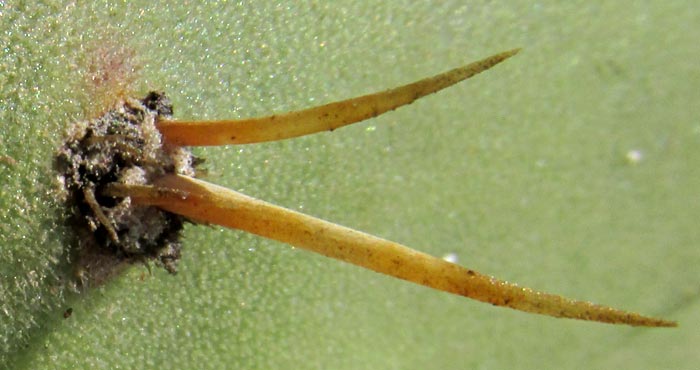
The glochids are numerous but shorter and blacker than in many pricklypear species. The larger spines are yellow, young ones. A side view of an areole and its spines appears below:
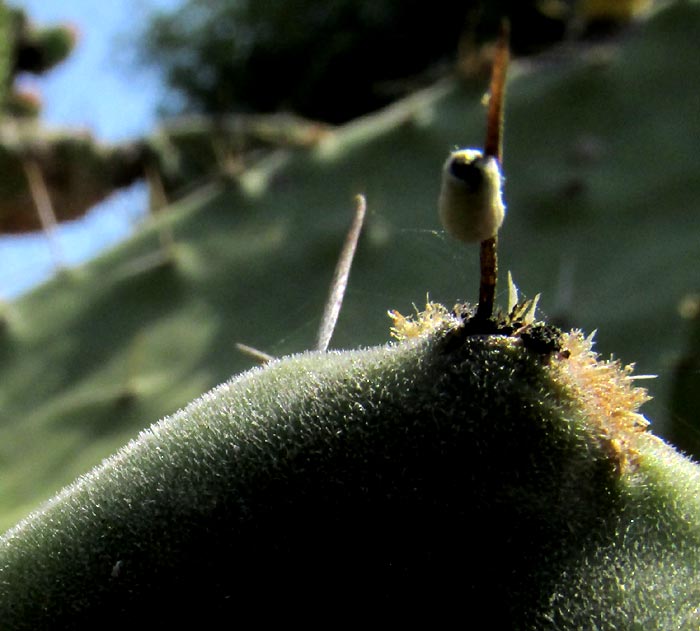
The spine has an insect cocoon attached with a hole in it where the metamorphosed adult has exited; I hadn't noticed it until the picture was viewed on the computer screen. Interesting as that is, the main feature I meant for the picture to show was that the surface of this young pad is heavily invested with short, velvety hairs. Most pricklypears don't bear such hairs, including our Tree Cactus.
Below you see the gnarly trunk of Opuntia tomentosa:

And here's the whole cactus itself, with a Smooth Mesquite, Prosopis laevigata, behind it:
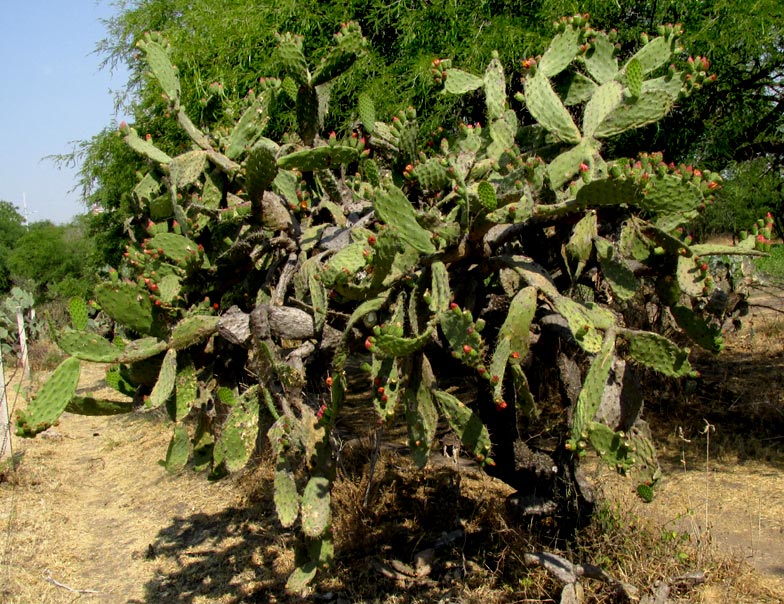
The distribution map for Opuntia tomentosa published by CONABIO, Mexico's official "National Commission for the Knowledge and Use of Mexico's Biodiversity," shows the native distribution to cover the arid, high-elevation parts of Mexico from northeastern to southern Mexico, but not the vast northwestern part. However, the species has been cultivated both by indigenous and modern people for a long time, so today it turns up cultivated and escaped in many parts of the world.
Along with other pricklypear species, especially Opuntia monacantha, Velvet Pricklypear has been used for farming the cochineal insect, which produces the brilliantly red chochineal dye. Others have cultivated its especially for its fast growth. Planted close together, it can quickly form a cactus fence for livestock. However, it's especially vulnerable to freezes, which may explain its absence from upland northwestern Mexico, where winter cold fronts sweep across the high desert and grassland.